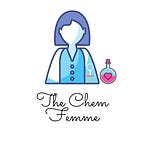Basic things about Organic Chemistry I wish someone had told me before.
Chemistry was initially quite difficult for me to understand. Here are a few basic concepts which when understood perfectly will help. I am assuming you have an idea about some things in chemistry.
Bonds
Organic compounds generally contain covalent bonds. These bonds are formed by sharing of electrons so that individual atoms get a stable configuration. It is of two types,
- Sigma bond
- Pi bond
Sigma bond is the strongest type of covalent bond which is formed by head on overlap of the atomic orbital.
Pi bond is formed by the lateral overlap of the orbitals. This leads to the formation of double and triple bond. Pi bonds are shorter and stronger than sigma bond.
Nucleophile vs Electrophile
Whenever I saw these two words, I landed up being extensively confused! They sound exactly the same. The solution to this problem- remember, nucleophile means nucleus loving and electrophile is electron loving.
A nucleophile has a tendency to donate electrons whereas an electrophile has a tendency to accept electrons. The nucleus in an atom possesses a positive charge, the nucleophile is nucleus loving which implies that a nucleophile must have a negative charge or an extra pair of electrons. For electrophiles, it is the opposite.
This concept is important because reaction mechanisms can be easily understood once you get the hang of this.
Reaction mechanism/Synthesis
The key to understanding a reaction mechanism/synthesis is knowing how to read it then proceeding to figure out what exactly happens.
In intermediary steps, the arrow always shows the movement of electrons. The arrowhead points to the site of less electron density.
Never memorize a synthesis, understand it. Remember the starting material, the reagent and the end product. The steps will automatically come.
Oxidation and Reduction
The basic idea about oxidation and reduction is given below
For example,
This concept is taught when we are at school. It is always related to the loss, gain of Hydrogen and Oxygen.So, in the above reaction,
- Aluminium is undergoing the process of reduction as it has lost Oxygen
- Hydrogen is undergoing the process of oxidation as it has gained Oxygen
Till here it is quite simple. But loss and gain of electrons gets tad confusing. But there is way you can remember which is which.
LEO- Loss of Electron: Oxidation
Reduction is the opposite of the above. For example
Here,
- Aluminium is losing three electrons which implies it is undergoing the process of Oxidation
- Silver on the other hand is gaining electrons which implies it is undergoing the process of Reduction
That gives you the basic understanding about oxidation and reduction. But, that’s not all we have two very important key terms under this concept
- Oxidising agent
- Reducing agent
Let’s take the first equation.
We know
- Aluminium is undergoing the process of reduction as it is losing an Oxygen
- Hydrogen is undergoing the process of oxidation as it has gained the Oxygen
An oxidising agent supports the process of oxidation. However, it itself undergoes the process of reduction. In the above reaction, Aluminium Oxide acts as an oxidising agent because it itself gets reduced.
A reducing agent supports the process of reduction. However, it itself undergoes the process of oxidation. In the above reaction, Hydrogen acts as a reducing agent because it itself gets oxidized.
Bond Fission
Bond fission, as its name suggests, means breaking of bonds. A covalent bond undergoes two types of bond fission.
In homolytic bond fission, each fragment retains one of the originally bound electron which leads to the formation of two free radicals.
Here, bromine undergoes homolytic bond cleavage in the presence of sunlight and leads to the formation of two bromine free radicals.
In heterolytic bond fission, the electrons go to one of the fragments. This process leads to the formation of ions. The electrons move to the atom which possesses greater electronegativity.
Here, chlorine possesses higher electronegativity than carbon and takes the electron pair of the bond. Chlorine gets a negative charge and leaves the carbon with a positive charge.
These concepts are quite important to understand organic chemistry! Hope this was of some help to you!
